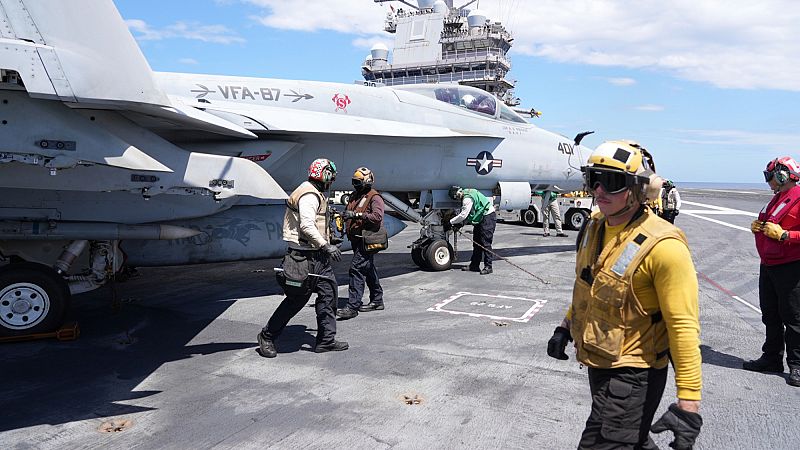European NATO allies set to collectively reach 2% spending target for first time

NATO European allies and Canada should collectively reach the alliance's 2% of GDP spending target for the first time this year, figures released on Thursday show, as they gear up to boost investments to their new 5% target.
Figures unveiled by the military alliance show that all allies are finally projected to meet the target more than a decade after it was pledged at a summit in Wales with Albania, Belgium, Canada, Italy, Luxembourg, Montenegro, North Macedonia, Portugal, Slovakia, Slovenia and Spain all expected to just about scrape past the mandated threshold for the first time.
Iceland is exempted from the target as it does not have armed forces. Germany's figures are not yet included since the country's budget had not been approved at the time the data was collected.
This should bring defence spending by allies from Europe and Canada to a joint 2.27% of GDP, up from 1.99% last year and 1.40% back in 2014 when the target was set. With the US's participation, the rate is bumped further to 2.76% of GDP.
Poland, which aims to bring its defence spending to 5% of GDP in 2026, remains the biggest spender among all 32 allies, with an estimated 4.48% of GDP spent on its military this year. It is followed by the three Baltic countries.
Overall, defence expenditure from NATO Europe and Canada should grow by 15.9% year-on-year, a slight decrease from 2024, but still significantly higher than the 2.6% annual growth registered in 2021 before Russia launched its full-scale invasion of Ukraine.
The US is in joint sixth position with Denmark, with 3.22% of its GDP spent on defence, although Washington's budget blows the others out of the water. The US is estimated to spend some $980 billion (€842 billion) on defence this year, more than 10 times the budget of the UK, which is the second biggest spender in real terms.
The latest figures come just a few weeks after allies agreed to massively ramp up their military expenditures and committed to a new target of 3.5% of GDP on core defence spending, with an additional 1.5% of GDP to be spent on defence-related investments.
The new target, which allies will have to meet by 2035 at the latest, was a vindication for US President Donald Trump, who had during his first term and since his return to power, castigated European allies for not spending enough and suggested Washington could scale back its support to low spenders.
A relief for Europe was however the reiteration in the joint statement released at the end of the leaders' summit that Russia remains "a long-term threat" to "Euro-Atlantic security".
European allies are nonetheless now waiting to see to what extent Washington might pull back from Europe, as it seeks to pivot towards the Indo-Pacific region.
Today

